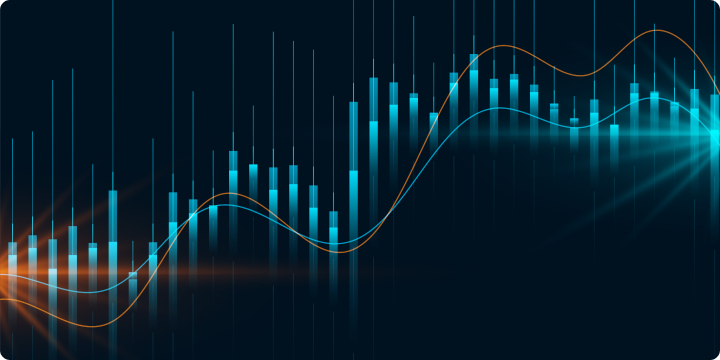
Trading and investing in crypto assets can sound intimidating, but with the right tools and strategies, it can be a walk in the park for anyone. In this article, we’ll simply explain what to consider when observing crypto price charts, how to properly analyze them, as well as how to turn your findings into trading action.
About crypto price charts and their importance
Crypto price charts are graphical depictions of the valuation development of crypto assets. One chart tends to display the price movements of one specific asset in a given timeframe, with the vertical (Y) axis being the value of one crypto token, and the horizontal (X) representing time.
As for their importance, crypto price charts are vital elements of the industry, as most investors and traders rely on them when making their decisions. That is why knowing the basics of their analysis is crucial, even for those just getting started.
Types of crypto price charts
There are countless variations of crypto price charts out there, but the most popular are simple line graphs and candlestick charts. To understand them both, let’s take a look at these two types separately.
Starting with line charts, which is the type most beginners will meet for the first time. They are really great for providing a general idea of the price development over a period of time, as they are simple, and easy to grasp for everyone. Note that with line charts, traders can rarely use technical analysis, which candlesticks charts are perfectly suitable for.
Moving on to candlestick charts, the type that is often associated with more advanced trading and professional usage. To be frank, it is more complex and harder to understand than line charts, however, knowing the basics can help even beginners with getting started. Candlesticks essentially display five pieces of information for traders within a specific timeframe. To illustrate, let’s take a look at a candle that opened at 9:00 AM and closed at 10:00 AM. This candle will have a wide body, which is a rectangle of any size, and two thin lines on each end, called wicks. If the candle is red, the price changed negatively overall in our timeframe, while a green one indicated a positive absolute price action.
How to analyze crypto price charts
There are numerous ways to analyze crypto price charts, including technical analysis, indicator-based trading, or simple analysis. To ensure we start with the basics, we will only talk about simple analysis for now.
Simple analysis means investors are observing line charts at a higher timeframe to identify trends, effects of news, and support, or resistance levels.
For instance, you could start an analysis by observing a chart to locate a major increase or drop in price. After checking which day the change happened, go and research if anything major was announced about the crypto asset that day. If so, it could be a sign that the asset price will react the same way in the future after the publication of similar news.
Alternatively, you could look at support and resistance levels to identify your entry and exit points. To put these terms into context, a support means the level a price of an asset bounced back from after a decrease several times within a shorter period of time, while a resistance is a level that a price could not go above even after multiple attempts. Once you’ve identified these levels, you could consider selling your assets the price of which is approaching resistance, and buy assets that near support levels.
There you have it, the basics of crypto price chart analysis. Keep in mind that this was only the introduction to the field, and there are many more things one can take into account when observing charts of different kinds. In any case, the above information is more than enough to get you started, and could even boost your results significantly when applied properly.





